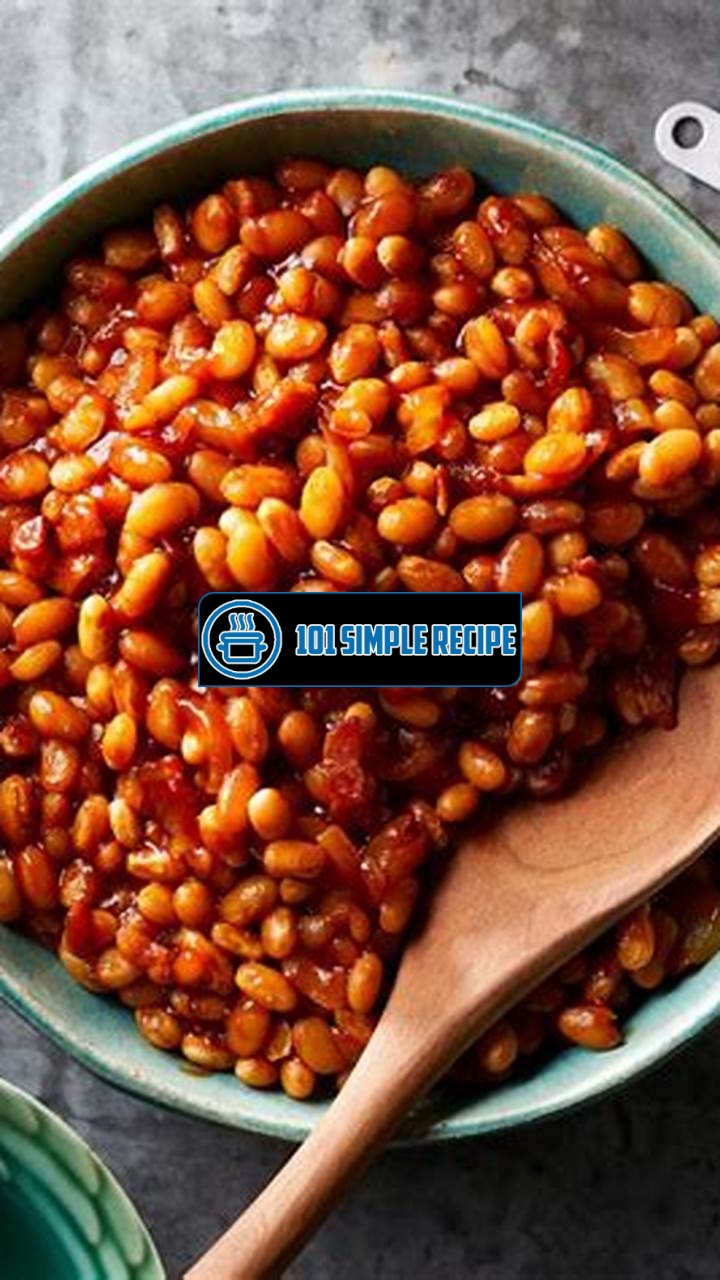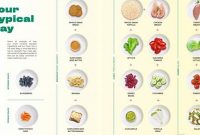Are you tired of the same old bean recipes? Look no further, because we’ve got you covered with a collection of delicious pressure cooked bean recipes that will tantalize your tastebuds and leave you craving for more. Whether you’re a vegetarian, looking to incorporate more protein into your diet, or simply love the versatility and flavor of beans, these recipes are sure to impress. From hearty soups and stews to flavorful dips and spreads, there’s a bean dish for every occasion and palate. So, put on your apron and get ready to embark on a culinary adventure that will transform your cooking game! ✨

Understanding Pressure Cooking Beans
Discover the benefits and intricacies of cooking beans using a pressure cooker.
Why Pressure Cooking Beans
Pressure cooking beans is a popular cooking method for several reasons. Firstly, it significantly reduces the cooking time compared to traditional stovetop methods. This is especially beneficial when you’re short on time but crave a delicious and nutritious bean dish.
Moreover, pressure cooking helps retain the nutritional value of beans. The high pressure and steam created inside the cooker ensures that the vitamins, minerals, and proteins stay intact. In fact, compared to boiling or other cooking methods, pressure cooking preserves up to 90% of the nutrients in beans, ensuring you get the maximum health benefits.
Not only does pressure cooking save time and retain nutrients, but it also enhances the flavor of the beans. The high pressure allows the beans to cook in their own juices, resulting in a rich and intense taste. This means you can enjoy beans that are not only nutritious but also bursting with flavor.
Additionally, pressure cooking beans helps break down complex carbohydrates and eliminates the hard-to-digest compounds found in legumes. This makes the beans easier to digest and reduces the chances of gastrointestinal discomfort often associated with consuming beans.
Lastly, pressure cooking is an energy-efficient method as it requires less heat and time compared to conventional cooking methods. By cooking beans in a pressure cooker, you can save both time and energy, making it an environmentally friendly choice.
How Pressure Cooking Works
Pressure cooking works by utilizing steam pressure to cook food quickly. By tightly sealing the pressure cooker, steam is trapped, and the internal temperature rises above the boiling point of water. This increased heat and pressure shorten the cooking time significantly.
Within the pressure cooker, the increased temperature and pressure cause the bean’s fibers to break down more quickly. This is an essential step in making the beans tender and ensuring they cook evenly.
Furthermore, the high pressure helps to infuse the flavors into the beans, resulting in a more flavorful dish. The steam within the cooker acts as a natural flavor enhancer, making your pressure-cooked bean recipes even more delicious.
Modern pressure cookers are equipped with safety features to regulate the pressure and prevent any accidents. These features include a pressure release valve, locking system, and overpressure plug to ensure that the pressure cooker operates safely.
Choosing the Right Beans for Pressure Cooking
When it comes to pressure cooking beans, not all varieties are created equal. Some beans are better suited for this cooking method than others.
Choose beans that are sturdy and hold their shape well. Examples of beans that are perfect for pressure cooking include black beans, kidney beans, chickpeas, and pinto beans. These beans have a firm texture and can withstand the high pressure and heat without turning mushy.
However, beans that are delicate and have a thin skin, such as lentils or split peas, are not ideal for pressure cooking. These beans tend to become overly soft and lose their texture when cooked under high pressure.
It’s also essential to soak the beans before pressure cooking them. Soaking helps to remove the indigestible compounds and reduces the cooking time even further. Soaking beans overnight or for at least 6 hours will ensure they cook evenly and become tender.
In conclusion, pressure cooking beans is a time-saving and nutritious way to cook this versatile ingredient. By understanding the benefits and nuances of pressure cooking, you can create delicious bean dishes that are not only satisfying but also packed with nutrients. So bring out your pressure cooker and get ready to elevate your bean recipes to a whole new level!
Looking for a healthy option? Try this weight loss recipe that features pressure cooked beans as a key ingredient. It’s both nutritious and delicious.
The Advantages of Pressure Cooking Beans
When it comes to cooking beans, pressure cooking offers numerous benefits that can enhance both the flavor and nutritional value of your meals. By harnessing the power of steam and high pressure, pressure cookers can significantly reduce cooking time while preserving essential nutrients. In addition, pressure cooking can help to reduce anti-nutrients that can hinder the absorption of vital vitamins and minerals. Let’s explore these advantages in further detail:
Time-Saving Benefits
One of the most significant advantages of pressure cooking beans is the time-saving aspect. With conventional cooking methods, beans often require hours of soaking and simmering to achieve a tender texture. However, with a pressure cooker, this time can be reduced to a mere fraction. In fact, beans that would typically take hours to cook can be ready in a matter of minutes. This can be particularly beneficial for busy individuals or families who want to enjoy the nutritional benefits of beans but are short on time.
Additionally, pressure cooking allows for simultaneous preparation of other ingredients, such as vegetables and grains. This means you can create wholesome and delicious meals in a fraction of the time it would traditionally take.
✅ Time-saving benefit: Pressure cooking significantly reduces cooking time, making it ideal for busy individuals.
Nutritional Advantages
Pressure cooking not only saves time but also helps to retain essential nutrients that are often lost during other cooking methods. The high temperature and steam created in a pressure cooker can lock in vitamins, minerals, and antioxidants that might otherwise be destroyed by longer cooking times or exposure to air and heat.
In particular, pressure cooking preserves B vitamins, such as thiamine, riboflavin, and niacin, which play a crucial role in metabolism and overall health. Additionally, minerals like potassium, magnesium, and iron are retained in higher amounts compared to conventional cooking methods. These minerals are essential for maintaining healthy bones, energy levels, and immune function.
✅ Nutritional advantage: Pressure cooking helps to preserve essential vitamins, minerals, and antioxidants.
Reducing Anti-Nutrients with Pressure Cooking
Beans, like many other plant-based foods, contain natural compounds called anti-nutrients. These substances can interfere with the body’s ability to absorb certain vitamins and minerals. However, pressure cooking can help to reduce the levels of anti-nutrients in beans, making their nutrients more bioavailable.
One prominent anti-nutrient found in beans is phytic acid, which can bind to minerals like iron and zinc, making them harder for the body to absorb. Fortunately, pressure cooking can deactivate phytic acid, thus improving the absorption of these vital minerals. This is especially beneficial for individuals following a plant-based diet, as it ensures that the body can efficiently utilize the nutrients present in beans.
✅ Anti-nutrient reduction: Pressure cooking deactivates anti-nutrients such as phytic acid, enhancing the bioavailability of minerals.
In conclusion, pressure cooking provides a range of advantages when it comes to preparing beans. Not only does it save time in the kitchen, but it also helps to preserve important nutrients and reduce anti-nutrients. By incorporating pressure-cooked beans into your meals, you can enjoy delicious and nutritious dishes that are both convenient and beneficial for your overall health.
Hosting a party? Impress your guests with this refreshing punch bowl recipe that incorporates pressure cooked beans. It’s a crowd-pleaser that will have everyone asking for the recipe.
Preparing Beans for Pressure Cooking
In order to achieve the best results when pressure cooking your beans, it is important to take a few important steps before you begin. These steps include soaking the beans, rinsing and cleaning them, and deciding whether or not to add salt. By following these steps, you can ensure that your pressure cooked beans turn out delicious and full of flavor.
Soaking Beans
Soaking beans before pressure cooking them is highly recommended, as it helps to soften the beans and reduce their cooking time. This is particularly important for larger beans, such as kidney or black beans, which can take longer to cook. Soaking also helps to remove some of the indigestible sugars that can cause gas and discomfort. To soak your beans, simply place them in a large bowl and cover them with water. Let them soak for at least 4-6 hours, or overnight for best results. This will help to ensure that your beans are fully hydrated and ready to be pressure cooked.
Rinsing and Cleaning Beans
Before pressure cooking your beans, it is important to rinse and clean them thoroughly. This helps to remove any dust, dirt, or debris that may be present. Start by placing your beans in a colander and rinsing them under cold water. Use your hands to gently rub the beans together, ensuring that all surfaces are cleaned. You may also want to pick through the beans and remove any stones or damaged beans that you come across. Once your beans are clean, they are ready to be pressure cooked.
Salt or No Salt?
One important decision to make when preparing your beans for pressure cooking is whether or not to add salt. Some people prefer to add salt during the cooking process, as it can help to enhance the flavor of the beans. However, others prefer to wait until the beans are cooked and then add salt to taste. The choice is ultimately up to you and your personal preference. If you do decide to add salt, it is generally recommended to add about 1 teaspoon of salt per pound of beans. This can help to season the beans and infuse them with flavor as they cook under pressure.
Remember to adjust the salt content based on your dietary preferences or restrictions.
By following these important steps, you can ensure that your beans are properly prepared for pressure cooking. Soaking the beans helps to soften them and reduce cooking time, while rinsing and cleaning removes any dirt or debris. Whether or not to add salt is a personal choice, but adding it can enhance the flavor of the beans. With these steps completed, you are now ready to begin pressure cooking your beans and creating delicious dishes for your tastebuds to enjoy!
Cooking Beans in a Pressure Cooker
Master the art of cooking beans to perfection using a pressure cooker. Pressure cooking is a quick and efficient method that allows you to enjoy delicious and tender beans in a fraction of the time compared to traditional stovetop cooking.
Benefits of Pressure Cooking Beans:
- Quick cooking time
- Preserves nutrients
- Enhances flavor
- Reduces gas-producing compounds
- Uses less energy
When cooking beans in a pressure cooker, it’s important to follow a few key steps to achieve the best results.
Pressure Cooking Times
Each type of bean has a specific cooking time in a pressure cooker. It’s essential to know the exact cooking times to avoid undercooking or overcooking your beans.
Here are some general pressure cooking times for common beans:
| Bean Type | Pressure Cooking Time (minutes) |
|---|---|
| Black Beans | 20-25 |
| Chickpeas | 25-30 |
| Kidney Beans | 20-25 |
| Pinto Beans | 15-20 |
| Lentils | 5-8 |
Keep in mind that these times can vary depending on the altitude and the specific model of your pressure cooker. Always refer to the manufacturer’s instructions for precise cooking times.
Adding Flavor to Pressure Cooked Beans
While beans on their own are nutritious and delicious, you can take your pressure-cooked beans to the next level by adding flavor-enhancing ingredients. This will elevate your dish and leave your taste buds craving more.
Here are some ways to add flavor to your pressure-cooked beans:
- Add aromatics such as onions, garlic, and herbs.
- Use spices like cumin, paprika, or chili powder for a kick of flavor.
- Include a flavorful broth or stock instead of using plain water.
- Experiment with adding diced tomatoes, bell peppers, or corn for a burst of freshness.
Don’t be afraid to get creative and try different flavor combinations to suit your taste preferences.
Releasing Pressure and Opening the Cooker
After the cooking time is complete, it’s important to release the pressure from the cooker before opening it. There are two common methods for releasing pressure: the natural release and the quick release.
Note: Always refer to your pressure cooker’s manual for specific instructions on releasing pressure.
The natural release method involves allowing the pressure to decrease naturally over time. This can take anywhere from 10 to 20 minutes, depending on the manufacturer’s instructions. Once the pressure has completely released, you can safely open the cooker.
For a quick release, carefully use the pressure release valve to release the pressure at a faster rate. Be cautious as the steam can be hot. Once the pressure indicator drops, it is safe to open the cooker.
Remember to always follow the manufacturer’s instructions for your specific pressure cooker model to ensure a safe cooking experience.
Now that you have mastered the art of cooking beans in a pressure cooker, you can enjoy flavorful and tender beans in no time. Get creative with flavors and experiment with different beans to create a variety of delicious dishes that will satisfy your tastebuds.
Delicious Pressure Cooked Bean Recipes
Explore a variety of mouthwatering recipes that can be made using pressure-cooked beans. Whether you’re a fan of black beans, chickpeas, or lentils, these recipes will satisfy your taste buds and provide a hearty meal. Get ready to discover new flavors and textures with these delicious pressure cooked bean recipes.
Pressure Cooked Black Beans and Rice
Black beans and rice make for a classic and nutritious combination. By pressure cooking the black beans, you’ll achieve a rich and creamy texture that pairs perfectly with the fluffy rice. Add some spices and herbs to enhance the flavor, creating a truly satisfying meal.
️ Spice it up with some cayenne pepper or chili powder for an extra kick. ️
Spicy Pressure Cooked Chickpea Curry
If you’re a fan of Indian cuisine, you’ll love this spicy pressure cooked chickpea curry. The pressure cooker helps to infuse the flavors of the spices into the chickpeas, resulting in a deeply flavorful curry. Serve it with some warm naan bread or steamed rice for a complete and filling meal.
Add a dollop of yogurt on top to balance out the spiciness.
Hearty Pressure Cooked Lentil Soup
On a chilly day, nothing beats a comforting bowl of hearty lentil soup. By pressure cooking the lentils, you’ll achieve a tender and creamy consistency that will warm you up from the inside out. Add some vegetables and herbs to make it even more flavorful and nutritious.
Top it off with some freshly chopped parsley for a burst of freshness.
Exploring the Benefits of Pressure Cooking Beans
Pressure cooking is a fantastic method for preparing beans, as it significantly reduces the cooking time and helps to retain the nutritional value of the beans. Here are some benefits of pressure cooking beans:
- Time-saving: Pressure cooking beans significantly reduces the cooking time compared to traditional stovetop methods. In just a fraction of the time, you can have perfectly cooked beans ready to enjoy.
- Nutrient retention: The high pressure and temperature of the pressure cooker help to preserve the nutrients present in the beans. This means you’ll get all the nutritional benefits without any loss.
- Enhanced flavor absorption: Pressure cooking allows the beans to absorb the flavors of the spices and seasonings more effectively. This results in dishes with bolder and more intense flavors.
- Tender and creamy texture: The pressure cooker breaks down the tough fibers of the beans, resulting in a tender and creamy texture that is perfect for soups, stews, and curries.
- Convenience: Pressure cooking beans is incredibly convenient, especially if you have a busy schedule. Just set the timer and let the pressure cooker do its magic while you attend to other tasks.
Give Pressure Cooking Beans a Try!
Pressure cooked bean recipes are not only delicious but also offer numerous benefits. From time-saving convenience to enhanced flavors and textures, pressure cooking beans opens up a whole new world of culinary possibilities.
So why not dust off that pressure cooker and give these recipes a try? You’ll be amazed at the delectable meals you can create with just a handful of beans and some pantry staples. Happy cooking!
If you want to try something different with your pressure cooked beans, check out this delicious White Castle recipe. It’s a unique twist on traditional beans that you’re sure to love.
Frequently Asked Questions
Thank you for taking the time to read our article on pressure cooked beans recipes. Here are some frequently asked questions:
| No. | Questions | Answers |
|---|---|---|
| 1. | How long does it take to cook beans in a pressure cooker? | Cooking time will vary depending on the type of beans, but most beans can be cooked in a pressure cooker in 20-30 minutes. |
| 2. | Do I need to soak beans before pressure cooking? | Soaking beans overnight can help reduce cooking time, but it’s not necessary. You can cook beans directly in a pressure cooker without soaking. |
| 3. | Can I use canned beans instead of cooking from scratch? | Yes, you can substitute canned beans for cooked beans in pressure cooker recipes. Just make sure to adjust the cooking time accordingly. |
| 4. | What types of beans work best in a pressure cooker? | Most varieties of beans, including black beans, pinto beans, and chickpeas, can be cooked successfully in a pressure cooker. |
| 5. | Are pressure cooked beans healthier than canned beans? | Pressure cooked beans are generally considered healthier than canned beans because they contain fewer preservatives and sodium. |
| 6. | Are there any safety precautions I should take when using a pressure cooker? | Always follow the manufacturer’s instructions when using a pressure cooker to ensure safe operation. Make sure the pressure cooker is properly sealed before cooking. |
Thank You for Reading!
We hope you found our collection of pressure cooked beans recipes helpful. Now you can enjoy delicious and nutritious meals with the convenience of a pressure cooker. If you have any more questions or would like to share your own recipes, please feel free to visit our website again later. Happy cooking!
Jump to Recipe
Pressure Cooked Beans Recipes

Discover a variety of delicious bean recipes that can be easily prepared using a pressure cooker. From black beans to chickpeas, explore the possibilities!
- 2 cups of beans
- 4 cups of water
- 1 onion (diced)
- 2 cloves of garlic (minced)
- 1 teaspoon of salt
- 1/2 teaspoon of black pepper
- 1 tablespoon of olive oil
- Rinse the beans and remove any dirt or debris.
- In the pressure cooker, combine the beans, water, onion, garlic, salt, pepper, and olive oil.
- Close the pressure cooker lid and set the cooking time to 30 minutes.
- Start the pressure cooker and let it cook until the time is up.
- Allow the pressure to release naturally before opening the lid.
- Serve the pressure cooked beans hot and enjoy!






